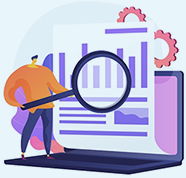“If your store isn’t on the first page of Google, does it even exist?” That question might sound dramatic, but in the world of online shopping, it’s spot on. Most people never scroll past the first page of search results, and that’s exactly where you want your Shopify store to be.
Ranking on the first page of Google can mean the difference between getting a handful of visitors or hundreds every day. It’s where visibility turns into clicks, and clicks turn into sales.
In this guide, we’ll walk you through how SEO and AI tools can help your Shopify store reach the front page of Google step by step, in plain language.
Why the First Page of Google Matters
Think about how you shop online. When you search for something, do you scroll through five or six pages of results? Probably not. Most people click on one of the top few listings Google shows.
That’s why ranking high matters; being on the first page means more eyes on your products, more trust from shoppers, and ultimately, more sales.
But how exactly does Google decide which pages deserve that spot? Let’s look at what goes on behind the scenes.
How Google Decides What to Show
Google’s main goal is simple: to show users the best, most helpful answers to their questions. The more your Shopify site checks these boxes, the higher your chances of ranking.
So before chasing fancy SEO tricks, focus on the basics, creating a site that’s fast, helpful, and user-friendly.
When deciding which pages to display, Google looks at a few key things:
- Content quality – Does your page clearly answer what people are searching for?
- Page speed – Does your website load quickly?
- Mobile-friendliness – Does it look and work great on phones and tablets?
- Backlinks – Do other trusted websites link to yours?
Make Sure Your Shopify Store is Ready
Before you jump into SEO tactics, make sure your Shopify store has a solid foundation. Think of it as cleaning your shop before customers walk in. Once your store is in good shape, it’s time to add some smart AI tools to your strategy.
Here’s how to get started:
- Use clear titles and descriptions that include your main keywords. For example, instead of “Home,” use “Handmade Soy Candles | Natural Fragrance Store.”
- Keep your website fast and mobile-friendly. Large images can slow things down. Compress them before uploading.
- Use Google Search Console. It’s a free tool that helps you see how your store shows up on Google and alerts you to any issues.
- Organize your pages. Keep things simple. A clean, easy-to-navigate website improves both user experience and SEO.
How AI Tools Can Help You Improve SEO
AI (Artificial Intelligence) is changing how businesses handle SEO. Instead of spending hours guessing what keywords to use or how to improve content, AI tools help you make smarter, faster decisions.
Just remember: AI is a helper, not a replacement. Always review and edit AI-generated content to make sure it sounds natural and matches your brand voice.
Some popular AI tools include:
- ChatGPT – for writing blogs, product descriptions, and content ideas.
- SurferSEO – for optimizing content to rank better on Google.
- SEMrush – for keyword research and competitor analysis.
Here’s how AI can help your Shopify SEO efforts:
- Find good keywords that people are actually searching for.
- Generate blog ideas around trending topics in your niche.
- Analyze competitors and discover what’s helping them rank.
- Write or rewrite content to sound fresh, clear, and relevant.
Choose the Right Keywords
Keywords are the words or phrases people type into Google to find products like yours.
For example, if you sell skincare, people might search for “organic face cream” or “best moisturizer for dry skin.” These are your keywords.
To find the right ones, use tools like:
- Google Keyword Planner
- Ahrefs
- Ubersuggest
When choosing keywords, focus on long-tail keywords (phrases with 3-5 words). They’re more specific and easier to rank for.
For example: “Shopify expert developer” Long-tail keywords usually bring in visitors who are ready to buy, not just browse.
Write Content That Google and People Like
One of the best ways to boost your rankings is by writing content that’s helpful, clear, and enjoyable to read. Google loves content that adds value to readers, and so do shoppers.
AI tools can help you brainstorm blog ideas or write first drafts, but your voice makes the real difference. Speak to your customers like you would in person, friendly, clear, and helpful.
Here’s what to keep in mind:
- Write short, simple paragraphs that are easy to scan.
- Use headings (H1, H2) to organize your content.
- Add keywords naturally, don’t stuff them in.
- Use images and always write descriptive alt text for them.
- Link to other pages in your store so users can easily explore.
Improve Technical SEO
Technical SEO is like tuning your car’s engine; it’s what makes your website run smoothly behind the scenes. A technically sound website not only ranks better but also keeps visitors around longer, and that’s exactly what Google notices.
Here are a few technical fixes that can make a big impact:
- Speed up your site. Compress images and use lightweight themes.
- Use HTTPS. It makes your site secure and builds trust with Google.
- Submit your sitemap through Google Search Console. This helps Google find and index your pages faster.
- Check for mobile performance. Use Google’s Mobile-Friendly Test to make sure your site works well on all devices.
Build Trust and Get Backlinks
Backlinks are links from other websites that point to your Shopify store. Think of them as votes of confidence when other trusted sites link to you; Google assumes your store is worth ranking.
Each quality link you earn helps strengthen your website’s authority. And when Google trusts your site, your rankings naturally improve.
You can build backlinks by:
- Write guest posts for blogs in your niche.
- Partnering with influencers who mention your store.
- Getting listed in relevant online directories.
- Asking customers to leave reviews on trusted platforms.
Keep Checking and Improving
SEO isn’t a one-time job; it’s an ongoing process. Even small updates over time can yield significant results. Identify which pages receive the most clicks and focus on improving the ones that don’t. Update your content regularly with new information, keywords, and insights. AI tools can also help you discover trending topics or keywords so your content stays fresh and relevant.
Use tools like:
- Google Analytics – to track how much traffic your store gets.
- Google Search Console – to monitor which pages are ranking.
Conclusion
Getting your Shopify page on the front page of Google takes time, patience, and consistent effort. There’s no shortcut, but the results are worth it.
Focus on creating genuinely helpful content, choosing the right keywords, keeping your website fast and mobile-friendly, and earning trust through backlinks. Use AI tools to make your SEO work easier. They can help with research, writing, and staying updated with trends.
Most importantly, remember that SEO isn’t just about algorithms; it’s about people. When your Shopify store gives visitors exactly what they’re looking for in a simple, enjoyable way, Google will notice and reward you with the visibility your business deserves.

With a Bachelor’s in Commerce and 15 years of experience in Ecommerce SEO and Shopify Development, I bring extensive expertise to the digital field. As Managing Partner at WillShall Consulting, I lead a team delivering exceptional Digital Marketing, Web Development, and Web Designing services. My passion for innovation and commitment to excellence help businesses thrive in the digital age.





 Call Us
Call Us Email Us
Email Us Video Call
Video Call




